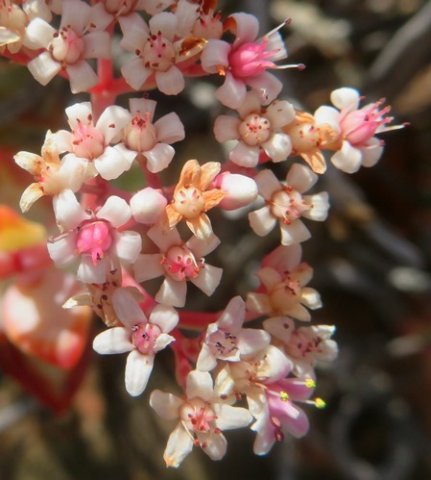Crassula rupestris later floral stages

A range of Crassula rupestris floral stages in picture display changes in the carpels, the ovary bodies where the seeds are being formed in the flower centres.
The five thick carpels in each flower are positioned in a ring inside the wider ring of withering petals that begin to hide their markedly recurved tips. Initially pink, the carpels culminate at the top in elegantly curved styles, tipped with stigmas that are hardly visible.
As the carpels whiten, their styles lose shape when browned and used up: the pollen has been transported, the stigma station where it arrived and was transported from (inwardly), can now safely be abandoned as of no further use.
Also the stamens suffer similar fate. Initially stiffly erect filaments present pollen laden anthers to visiting bees, bumblebees and even moths. When this is done the filaments bend and crumple, their once usable stock consumed.
A part dies, the plant survives, like clan and tribe survive when an individual dies. Lifes vibrancy is compensation for its brevity.
Staggered flowering in the same inflorescence benefits both seed production and feeding of pollinators (Smith, et al, 2017; Frandsen, 2017; Vlok and Schutte-Vlok, 2015).

